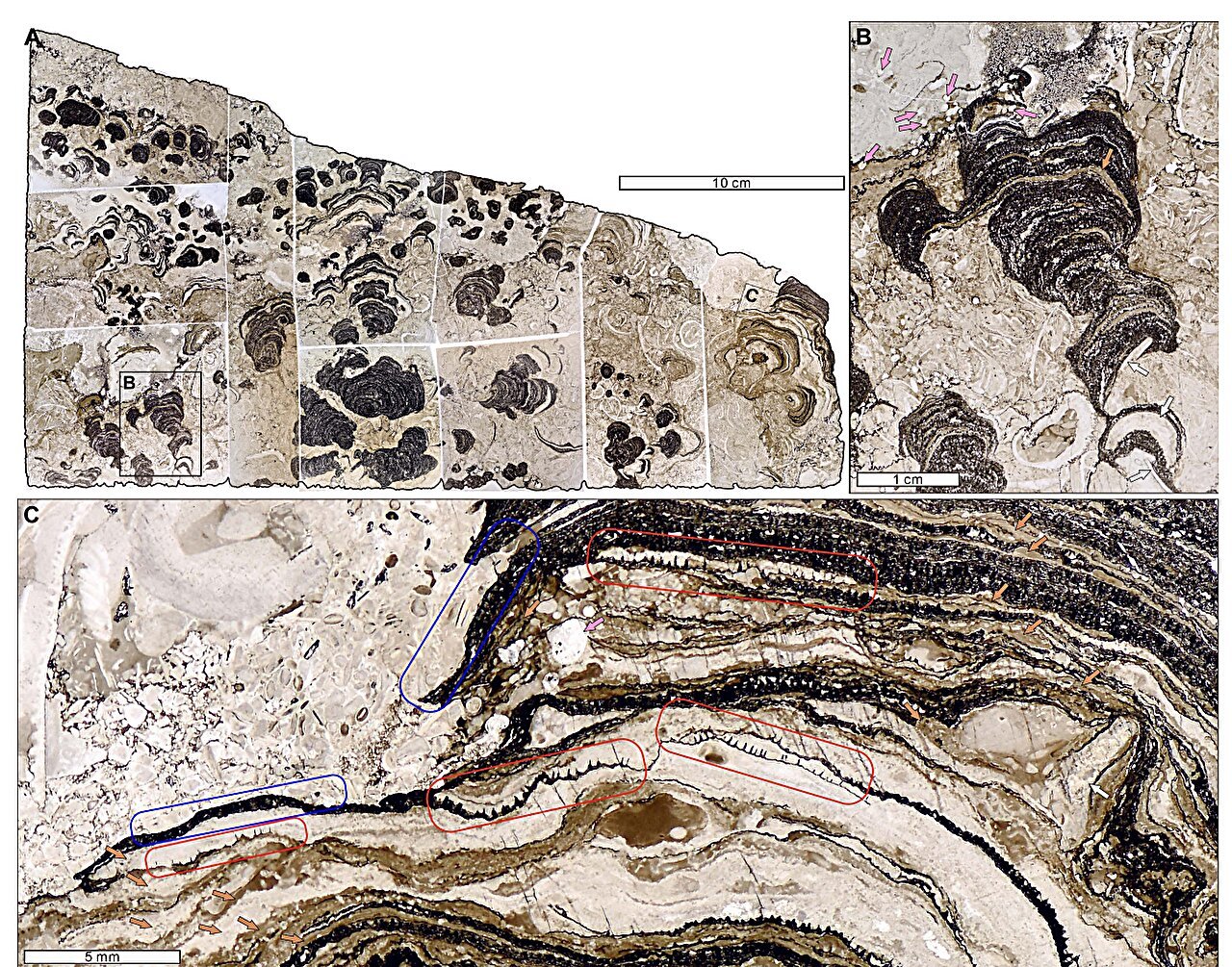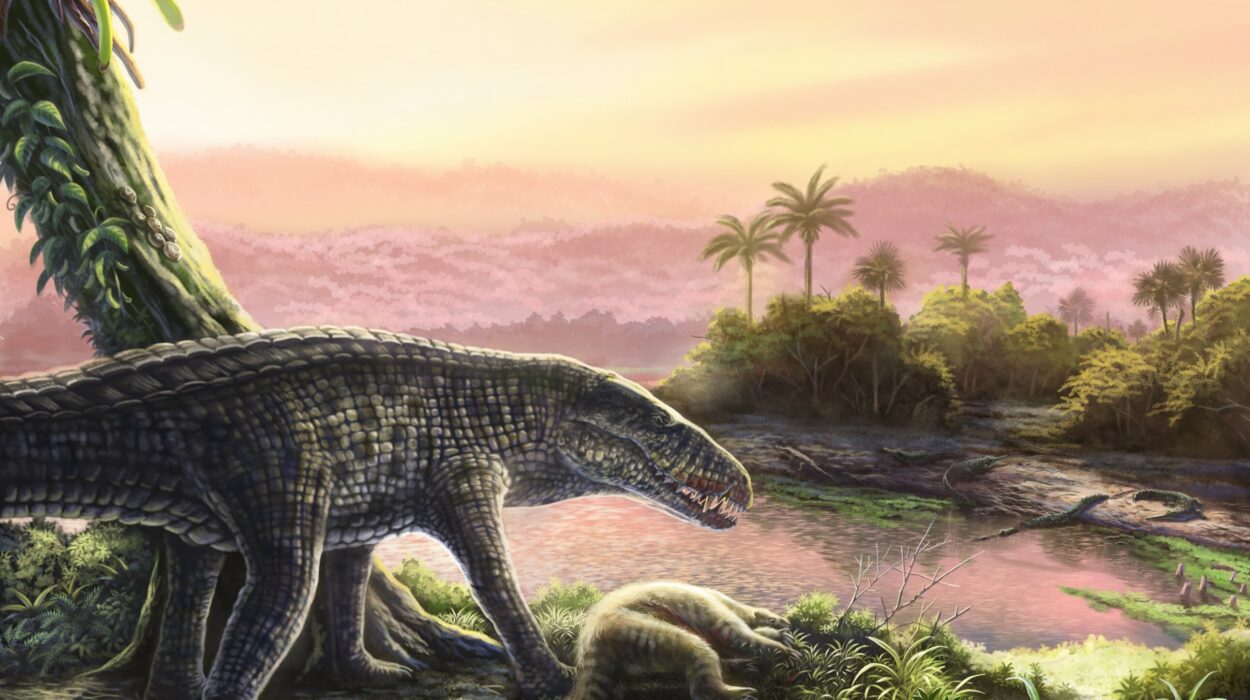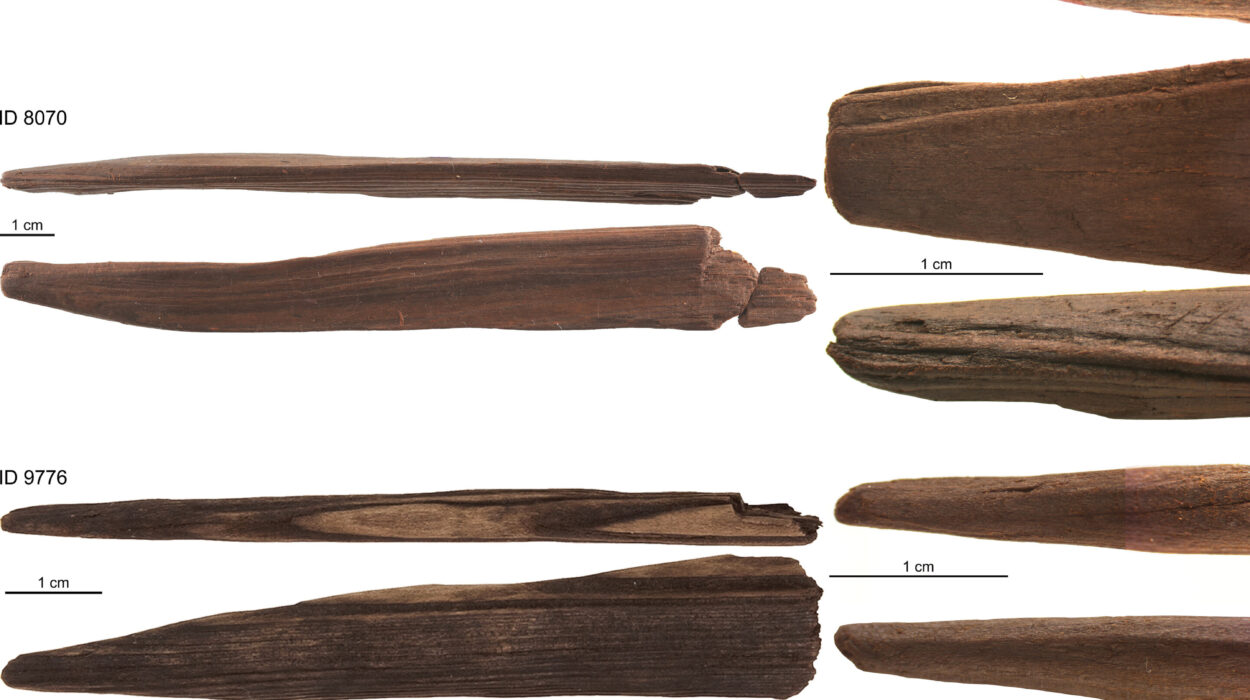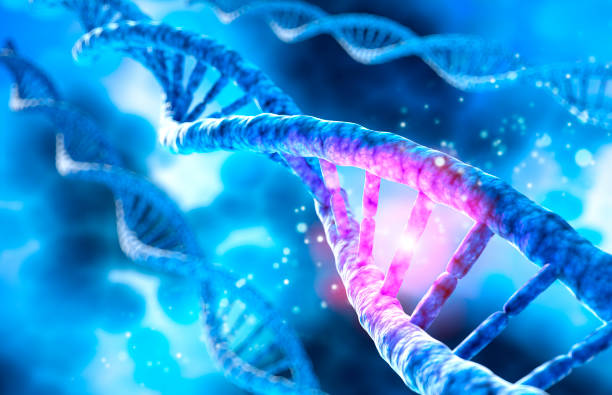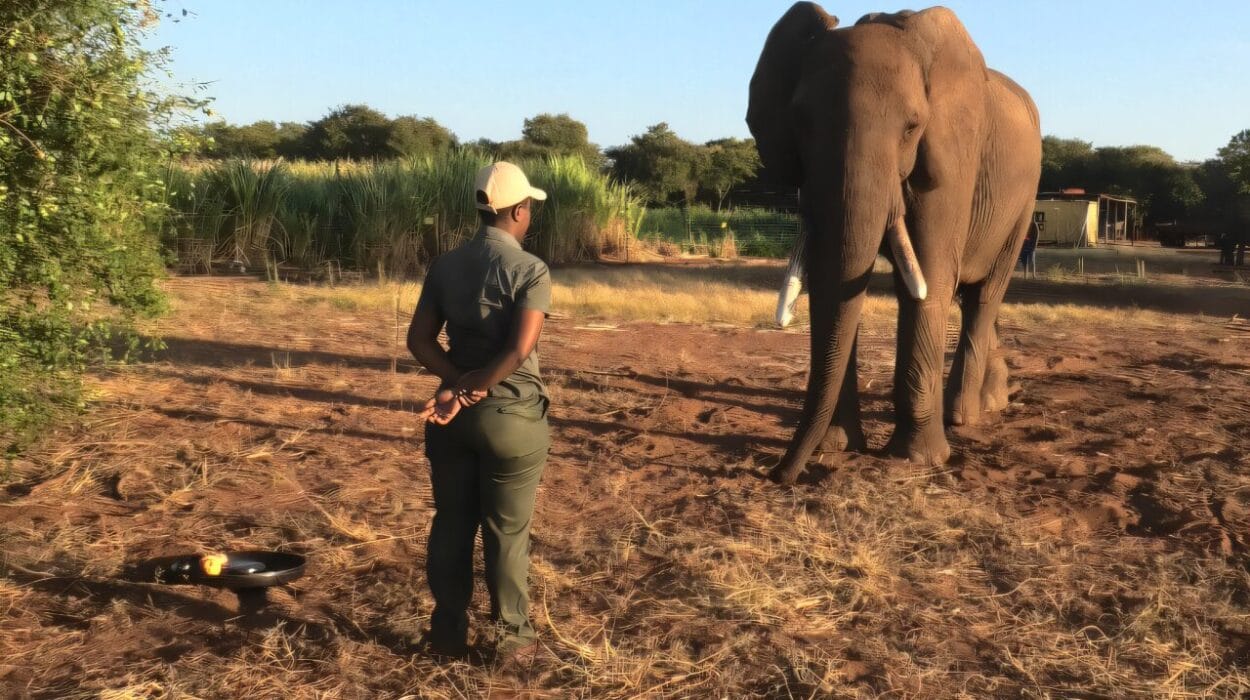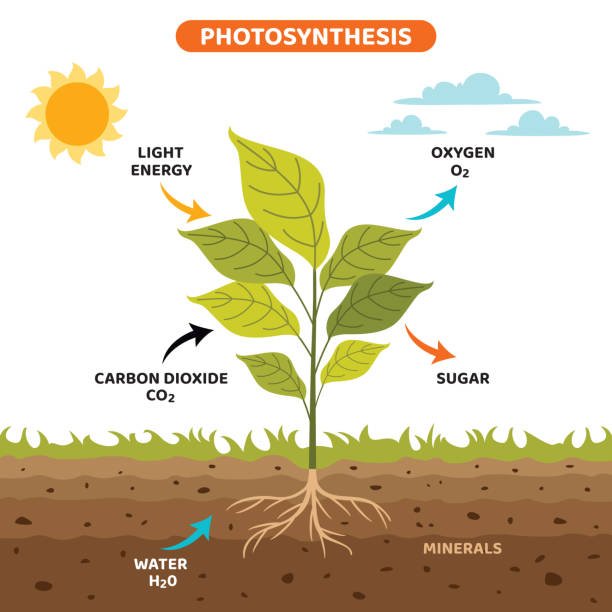In an extraordinary discovery that sheds new light on the evolutionary history of life on Earth, international scientists have unveiled the oldest known phosphatic stromatoporoid sponge, dating back to approximately 480 million years ago during the Early Ordovician period. This groundbreaking find, made in South China, has not only expanded the fossil record of stromatoporoid sponges by 20 million years but has also provided vital clues about the early stages of biomineralization and the complex reef ecosystems that existed during one of the most significant periods in Earth’s ancient history.
Stromatoporoid sponges were crucial reef builders during the Paleozoic era, playing a role similar to that of modern corals in constructing the frameworks of ancient reefs. Their evolutionary importance cannot be overstated, as they played a central role in the shift from microbial-dominated to skeletal-dominated reef ecosystems that occurred during the middle Paleozoic, particularly from the late Middle Ordovician to the Devonian period. However, until recently, the origins of these remarkable organisms, particularly their emergence and evolutionary history, were largely shrouded in mystery.
The new discovery, announced by an international team of researchers led by scientists from the Nanjing Institute of Geology and Paleontology of the Chinese Academy of Sciences, offers a transformative glimpse into the early evolution of stromatoporoids. This study, published in the prestigious Proceedings of the National Academy of Sciences, marks a significant leap in our understanding of both ancient reef ecosystems and the early biomineralization strategies employed by life forms during the Early Ordovician.
The Mystery of Stromatoporoid Origins
Stromatoporoid reefs were long thought to have appeared abruptly during the late Darriwilian period, around 460 million years ago, which had led to questions about the origin of these ancient reef-building organisms. Prior to this discovery, researchers were unable to pinpoint the precise origins of stromatoporoids or their evolutionary development, which left significant gaps in our understanding of how the early oceans evolved. The traditional view held that stromatoporoid sponges emerged relatively late in the Ordovician, and their initial appearance had remained poorly documented.
However, the recent discovery in Yuan’an, Yichang, South China, has radically altered this perception. The fossilized remains of Lophiostroma leizunia, the newly identified stromatoporoid species, date back to the Early Ordovician period, roughly 480 million years ago, a full 20 million years earlier than previously thought. This newly discovered species not only pushes back the timeline for stromatoporoid reefs but also provides essential insights into the evolutionary transition that led to the formation of more complex reef systems.
The implications of this discovery are profound, as it helps fill in a critical gap in the fossil record, providing evidence that these ancient sponges were already contributing to reef-building processes long before the traditional emergence of stromatoporoid reefs. Lophiostroma leizunia not only challenges the conventional understanding of the species’ timeline but also opens new avenues for research into the origins and diversification of early reef ecosystems.
A Revolution in Biomineralization: Phosphatic Sponges
What sets Lophiostroma leizunia apart from all other known sponges is its use of fluorapatite, a phosphate mineral, in constructing its skeletal structure. This represents a major shift in our understanding of how ancient animals employed biomineralization—the process by which organisms produce mineralized structures, such as shells, bones, and spicules. Prior to this discovery, it was believed that sponges primarily used silica, and in some cases, calcium carbonate, to build their skeletons. The use of phosphates in biomineralization, however, had never been observed in sponges from such an early period.
The discovery that Lophiostroma leizunia constructed its skeleton from fluorapatite indicates that the phylum Porifera (sponges) was the first known animal group to utilize all three principal biominerals: silica, calcium carbonate, and calcium phosphate. This remarkable versatility in biomineralization suggests that early sponges possessed a highly sophisticated genetic and biochemical toolkit, allowing them to adapt to a variety of environmental conditions by employing different minerals to build their skeletal structures.
Such an ability to use multiple minerals in the formation of skeletons would have been a significant evolutionary advantage. Biomineralization is a complex process, and the ability to tap into diverse mineral sources would have enabled early sponges to thrive in a range of marine environments, making them crucial players in the evolution of early marine ecosystems. This discovery opens the door for further research into how ancient organisms interacted with their environment and adapted to changing oceanic conditions.
The Role of Lophiostroma leizunia in Ancient Reefs
In addition to its exceptional skeletal composition, Lophiostroma leizunia is also significant for its role in constructing early reef ecosystems. Fossil evidence indicates that this ancient sponge played a crucial part in forming complex reef structures, binding together a variety of other reef components, including calcimicrobes, lithistid sponges, Calathium, and echinoderms. These findings suggest that early stromatoporoid reefs were far more ecologically complex than previously believed, with a variety of species contributing to the development of intricate reef frameworks.
Reefs constructed by Lophiostroma leizunia would have provided habitats for a wide array of marine life, much like modern coral reefs do today. This discovery not only highlights the importance of stromatoporoids in the development of early marine ecosystems but also underscores the role of ancient reef-building organisms in fostering biodiversity. By binding together various components of the reef, Lophiostroma leizunia would have helped create stable environments that promoted the growth and diversification of early marine life during a period of rapid ecological change known as the Great Ordovician Biodiversification Event (GOBE).
The GOBE, which occurred between 485 and 470 million years ago, was one of the most significant episodes in Earth’s history in terms of marine biodiversity. During this time, there was a dramatic increase in the complexity and diversity of marine life, with many new species of invertebrates, vertebrates, and other organisms appearing in the fossil record. The reefs built by organisms like Lophiostroma leizunia would have played a pivotal role in this diversification, providing habitats and resources for a range of newly evolving species.
South China: A Treasure Trove of Early Paleozoic Fossils
The discovery of Lophiostroma leizunia is particularly significant because of the exceptional fossil preservation found in South China, a region renowned for its Early Paleozoic marine ecosystems. Researchers have long been fascinated by the wealth of fossil evidence in this area, which provides a unique window into life during the Ordovician period. The region’s well-preserved strata offer an unparalleled opportunity to study the diversification of marine life during the GOBE and the development of complex reef systems.
South China’s fossil-rich Ordovician strata have yielded numerous important discoveries, and the identification of Lophiostroma leizunia is just the latest in a series of groundbreaking findings. These fossils provide critical insights into the evolutionary processes that shaped early marine ecosystems, offering a deeper understanding of the ecological and environmental factors that drove the dramatic increases in biodiversity during this pivotal time in Earth’s history.
A Deeper Understanding of Early Reef Ecosystems
This remarkable study not only enhances our knowledge of ancient reef ecosystems but also provides new perspectives on the evolution of biomineralization across the animal kingdom. By studying the skeletal composition and ecological role of Lophiostroma leizunia, researchers are gaining a better understanding of how environmental factors, such as mineral availability and oceanic conditions, influenced the biological evolution of early animals.
The discovery also contributes to the ongoing effort to reconstruct the history of life on Earth, offering new insights into how early organisms adapted to their environments and interacted with other species. As researchers continue to explore the fossil record, discoveries like Lophiostroma leizunia will undoubtedly lead to further revelations about the origins of complex ecosystems and the ways in which life on Earth evolved over millions of years.
Conclusion: A New Chapter in the History of Life on Earth
The discovery of the oldest known phosphatic stromatoporoid sponge, Lophiostroma leizunia, marks a significant milestone in the study of early marine ecosystems and the evolution of biomineralization. By pushing back the timeline for stromatoporoid reefs by 20 million years, this groundbreaking find has reshaped our understanding of the origins and early history of these ancient reef builders. Moreover, the unique biomineralization strategies employed by Lophiostroma leizunia open up exciting new avenues for research into the biochemical and genetic processes that allowed early animals to adapt to their environments.
As scientists continue to uncover the mysteries of Earth’s ancient past, discoveries like this remind us of the complex and dynamic nature of life’s evolution, providing us with new tools to better understand the forces that shaped our planet’s biosphere. Lophiostroma leizunia is a testament to the power of scientific inquiry, and its significance will undoubtedly resonate in the scientific community for years to come.
Reference: Zhang, Yuan-Dong et al, Phosphatic stromatoporoid sponges formed reefs ~480 Mya, Proceedings of the National Academy of Sciences (2025). DOI: 10.1073/pnas.2426105122.
